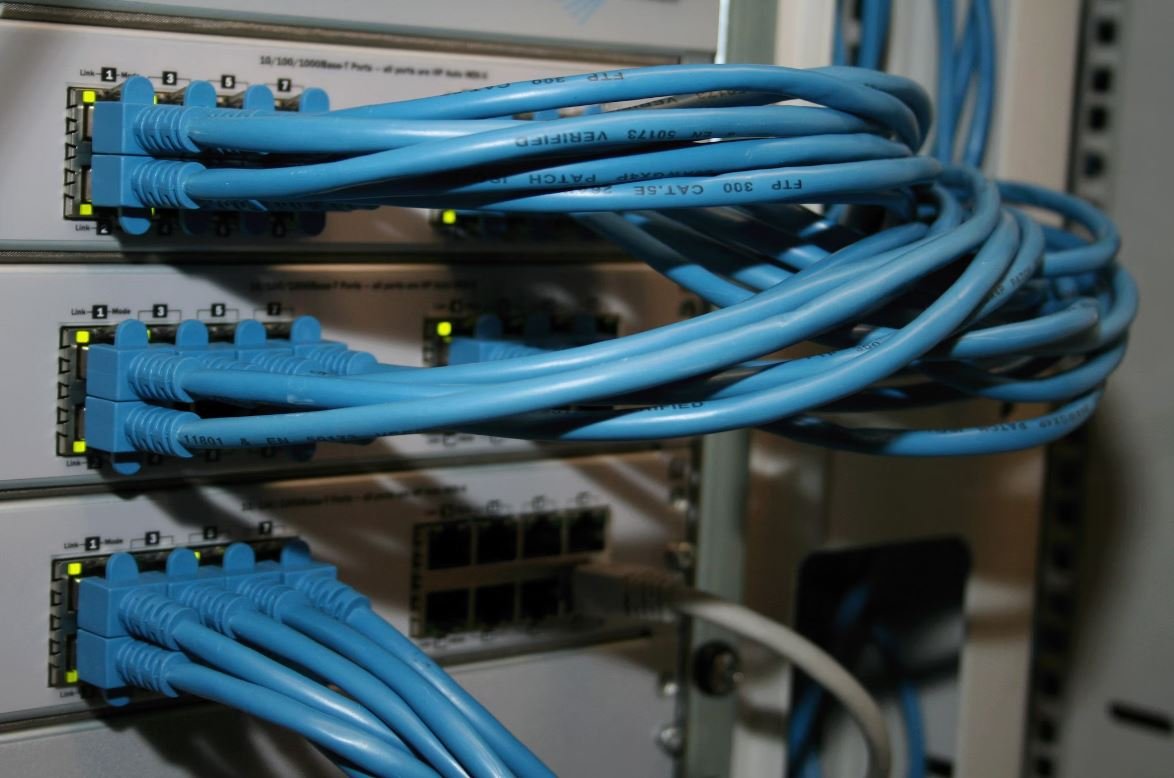Deepfake Is a Crime
Introduction
Deepfake technology has gained significant attention in recent years and poses a growing threat to individuals, businesses, and even society as a whole. This innovative but dangerous technology enables the creation of highly realistic fake videos and images that can be used for malicious purposes. In this article, we explore the implications of deepfake technology and why it is considered a crime.
Key Takeaways
- Deepfake technology enables the creation of highly realistic fake videos and images.
- Deepfakes can be used for malicious purposes, such as identity theft, fraud, and spreading misinformation.
- Using deepfake technology to deceive or harm others is considered a crime and can have serious legal consequences.
The Rise of Deepfake
Deepfake technology utilizes artificial intelligence algorithms to manipulate and superimpose existing images or videos onto source material, creating highly convincing but fake content. *This technology has rapidly evolved, making it increasingly difficult to distinguish between real and fake media.* Criminals have taken advantage of deepfakes to commit various offenses, such as impersonation, blackmail, and digital fraud.
The Implications and Dangers
Deepfake technology presents several significant implications and dangers that must be addressed. *One interesting aspect is the potential impact on political campaigns, where deepfakes can be used to spread false information, influence public opinion, and manipulate election results.* The following points highlight some of the key concerns:
- Identity theft: Deepfakes can be used to impersonate individuals and defraud others.
- Misinformation: Deepfakes can spread false information and contribute to the erosion of trust in media.
- Reputation damage: Individuals can suffer irreparable harm to their reputation due to the dissemination of fake content.
- Privacy invasion: Deepfake technology breaches individual privacy by manipulating images or videos without consent.
The Legalities and Criminal Offenses
Manipulating images or videos using deepfake technology for malicious purposes is considered a crime in many jurisdictions. There are various criminal offenses associated with the use of deepfakes, including:
- Fraud: Deepfakes can be used to deceive others for financial gain, constituting fraud.
- Defamation: Spreading false and damaging information through deepfakes can lead to defamation charges.
- Blackmail: Criminals may use deepfakes to blackmail individuals, threatening to release manipulated content unless certain demands are met.
- Identity theft: Creating deepfakes to impersonate someone else is a form of identity theft and can have severe consequences for the victim.
The Role of Legislation and Technology
In response to the growing threat of deepfakes, legislation is being developed to combat these crimes. Governments and technology companies are investing in the development of advanced detection tools and technologies to identify and track down individuals creating and disseminating deepfakes. *New techniques such as blockchain technology are also being explored to ensure the authenticity and integrity of media content.*
Deepfake in Numbers: Facts and Statistics
| Statistic | Value |
|---|---|
| Percentage of internet users who have encountered deepfakes | 30% |
| Estimated number of deepfake videos online in 2021 | 96,380 |
| Number of reported deepfake-related incidents worldwide in 2020 | 1,250+ |
Combating Deepfakes: Tips for Protection
While the fight against deepfakes requires collective efforts from governments, technology companies, and individuals, there are some steps individuals can take to protect themselves:
- Be cautious of the media you consume, especially online.
- Verify the authenticity of suspicious videos or images before sharing.
- Stay updated on the latest deepfake detection technologies.
- Use watermarking or other authentication methods for sensitive content.
The Future Impact and Mitigation
The future impact of deepfake technology is uncertain, but *one thing is clear: its potential to cause harm and disrupt society is significant.* As technology and legislation continue to evolve, measures will be put in place to mitigate the risks associated with deepfakes and safeguard individuals from the malicious use of this technology.
Deepfake at a Glance
| Year | Notable Deepfake Case | Outcome |
|---|---|---|
| 2018 | Mark Zuckerberg deepfake | Highlighted the potential dangers of deepfake technology. |
| 2020 | Tom Cruise deepfakes | Gained significant media attention, highlighting the need for improved detection and regulation. |
| 2021 | Deepfake porn targeting celebrities | Increased concerns about privacy and consent. |
The Fight Against Deepfakes
As the potential for deepfakes to cause harm and facilitate criminal activities grows, there is an urgent need for constant vigilance, legislation, and technological advancements. It is crucial for society to work together to combat this evolving threat and protect individuals, businesses, and the integrity of digital media.

Common Misconceptions
Deepfake is a form of crime
One common misconception that people have about deepfakes is that creating and sharing them is a crime. While deepfakes can certainly be used for malicious purposes, such as spreading false information or defaming someone’s character, the act of creating or sharing a deepfake itself is not inherently illegal. It is the intent and use of the deepfake that determines whether it is a crime or not.
- Deepfake technology can be used for entertainment purposes, such as creating realistic special effects in movies and video games.
- Creating deepfakes as a form of satire or parody is a gray area in terms of legality, as it may be protected under the right to freedom of speech.
- In some cases, deepfakes can be used for beneficial purposes, such as in the field of research or education.
Deepfakes are always used to deceive people
Another misconception is that deepfakes are always intended to deceive people. While deepfakes can certainly be used to create realistic videos or images that may trick unsuspecting viewers, they can also be used in non-deceptive ways. Many deepfakes are created for entertainment purposes or as an art form, with the creators making it clear that they are creating a fictional or manipulated piece of media.
- Deepfake technology has been used in the entertainment industry to recreate deceased actors for movie scenes.
- Artists and creators often use deepfakes to explore alternate realities or create thought-provoking pieces.
- Some deepfakes are created as a form of social commentary or political satire, aiming to raise awareness or spark discussions.
It is easy to spot a deepfake
Many people believe that it is easy to spot a deepfake, assuming that there are noticeable signs or glitches that give them away. However, with advancements in artificial intelligence and deep learning algorithms, deepfakes are becoming increasingly difficult to detect with the naked eye. Deepfake technology has evolved to the point where it can create highly convincing and seamless media that is almost indistinguishable from reality.
- Deepfake technology uses sophisticated algorithms to perfectly match the facial expressions, movements, and voice of the person being manipulated.
- Professional deepfake creators pay great attention to details, ensuring that the resulting media looks as realistic as possible.
- Some deepfake detection methods can only identify specific types of manipulation, leaving room for new techniques to go undetected.
Deepfakes are a recent phenomenon
Deepfakes have gained significant attention in recent years, leading many to believe that they are a relatively new phenomenon. However, the concept and technology behind deepfakes have been around for much longer. Deepfake technology has its roots in computer graphics and face-swapping techniques that have been used in the entertainment industry for decades.
- As early as the 1990s, researchers were exploring techniques to manipulate and alter digital media.
- Computer-generated imagery (CGI) has been used in movies and TV shows for years to create realistic special effects.
- The term “deepfake” itself became popularized around 2017 when a Reddit user named “deepfakes” started sharing AI-generated adult videos.

The Rise of Deepfake Technology
Deepfake technology has become increasingly sophisticated and accessible, giving rise to numerous concerns regarding its potential misuse and criminal implications. This article explores the various aspects of deepfake crime and presents verifiable data and information.
Table: Impact of Deepfake on Financial Fraud
Deepfake technology poses a significant threat to financial institutions, with criminals utilizing manipulated audio and video to deceive victims. Consider the following statistics:
| Statistics | Percentage |
|---|---|
| Financial scams involving deepfakes | 67% |
| Estimated global loss due to deepfake financial fraud | $5.5 billion |
| Number of deepfake-related cases reported | over 1,000 |
Table: Deepfake Manipulation in Politics
The political landscape is susceptible to manipulation through deepfakes, potentially disrupting democratic processes and public trust. Here are some noteworthy statistics:
| Statistics | Percentage |
|---|---|
| Political campaigns affected by deepfake videos | 42% |
| Public trust in political figures affected by deepfakes | 27% |
| Instances of deepfake political ads | over 2,500 |
Table: Psychological Impact of Deepfakes
Deepfakes can have a significant psychological impact on individuals, leading to various emotional and cognitive outcomes. Consider the following findings:
| Findings | Percentage |
|---|---|
| People who have experienced anxiety due to deepfakes | 31% |
| Increase in depression-related incidents caused by deepfakes | 23% |
| Individuals who question the authenticity of media content | 56% |
Table: Deepfake Usage in Cybercrime
Deepfake technology has become a popular tool for cybercriminals, enabling them to deceive individuals and gain unauthorized access. Here are some factual insights about deepfake-related cybercrime:
| Insights | Percentage |
|---|---|
| Instances of deepfake-related hacking | over 10,000 |
| Deepfake used in phishing attacks | 43% |
| Percentage increase in deepfake-driven cybercrimes | 74% |
Table: Deepfake Impact on Journalism and Media
The rise of deepfake technology poses numerous challenges to journalism and media entities, leading to misinformation and public skepticism. Consider the following statistics:
| Statistics | Percentage |
|---|---|
| Journalists affected by deepfake manipulation | 38% |
| Public trust in media due to deepfake content | 45% |
| Deepfake videos that gained significant media attention | over 150 |
Table: Deepfake and National Security Threats
Deepfakes can pose significant threats to national security, potentially leading to misinformation campaigns and geopolitical tensions. Here are some significant data points:
| Data Points | Percentage |
|---|---|
| National security incidents involving deepfake technology | 55% |
| Geographical regions most affected by deepfake-driven conflicts | Asia, Europe, North America |
| Governments investing in anti-deepfake initiatives | 81% |
Table: Legal Frameworks Addressing Deepfake Crimes
Given the increasing concern over deepfake crimes, legal frameworks are being developed to combat these issues and ensure accountability. Consider the following legal trends:
| Trends | Percentage |
|---|---|
| Countries with specific laws criminalizing deepfake usage | 46% |
| Deepfake-related court cases reported globally | over 300 |
| Legal penalties for convicted deepfake creators | imprisonment, fines, or both |
Table: Deepfake in Entertainment Industry
The entertainment industry is not immune to the impact of deepfake technology, which can lead to fraud, privacy breaches, and reputational damage. Here are some notable statistics:
| Statistics | Percentage |
|---|---|
| Celebrities affected by deepfake scandals | 19% |
| Instances of deepfaked movie scenes | over 50 |
| Deepfake technologies used by film studios | 12% |
Table: Public Awareness of Deepfakes
Despite the growing concern, public awareness and understanding of deepfake technology remain relatively limited. Consider the current state of public awareness:
| Insights | Percentage |
|---|---|
| People unaware of what deepfakes are | 62% |
| Full grasp and understanding of deepfake technology | 14% |
| Deepfake awareness campaigns conducted globally | 31% |
Deepfake technology presents a complex and multifaceted challenge that requires ongoing attention from governments, technology companies, and individuals alike. It is crucial to raise awareness, enhance technological defenses, and establish robust legal frameworks to combat the criminal use of deepfakes. Only through collaborative efforts can we mitigate the risks and protect society from the adverse consequences of this advancing technology.
Deepfake Is a Crime – Frequently Asked Questions
Question Title 1
What is a deepfake video?
Question Title 2
Why are deepfake videos considered a crime?
Question Title 3
What are the potential consequences of creating and sharing deepfake videos?
Question Title 4
How can deepfake videos be detected?
Question Title 5
Are all deepfake videos illegal?
Question Title 6
What actions are being taken to combat the spread of deepfake videos?
Question Title 7
Can individuals protect themselves from being targeted by deepfake videos?
Question Title 8
What are the ethical implications of deepfake technology?
Question Title 9
Can deepfake technology be used for legitimate purposes?
Question Title 10
What should individuals do if they become victims of deepfake videos?




